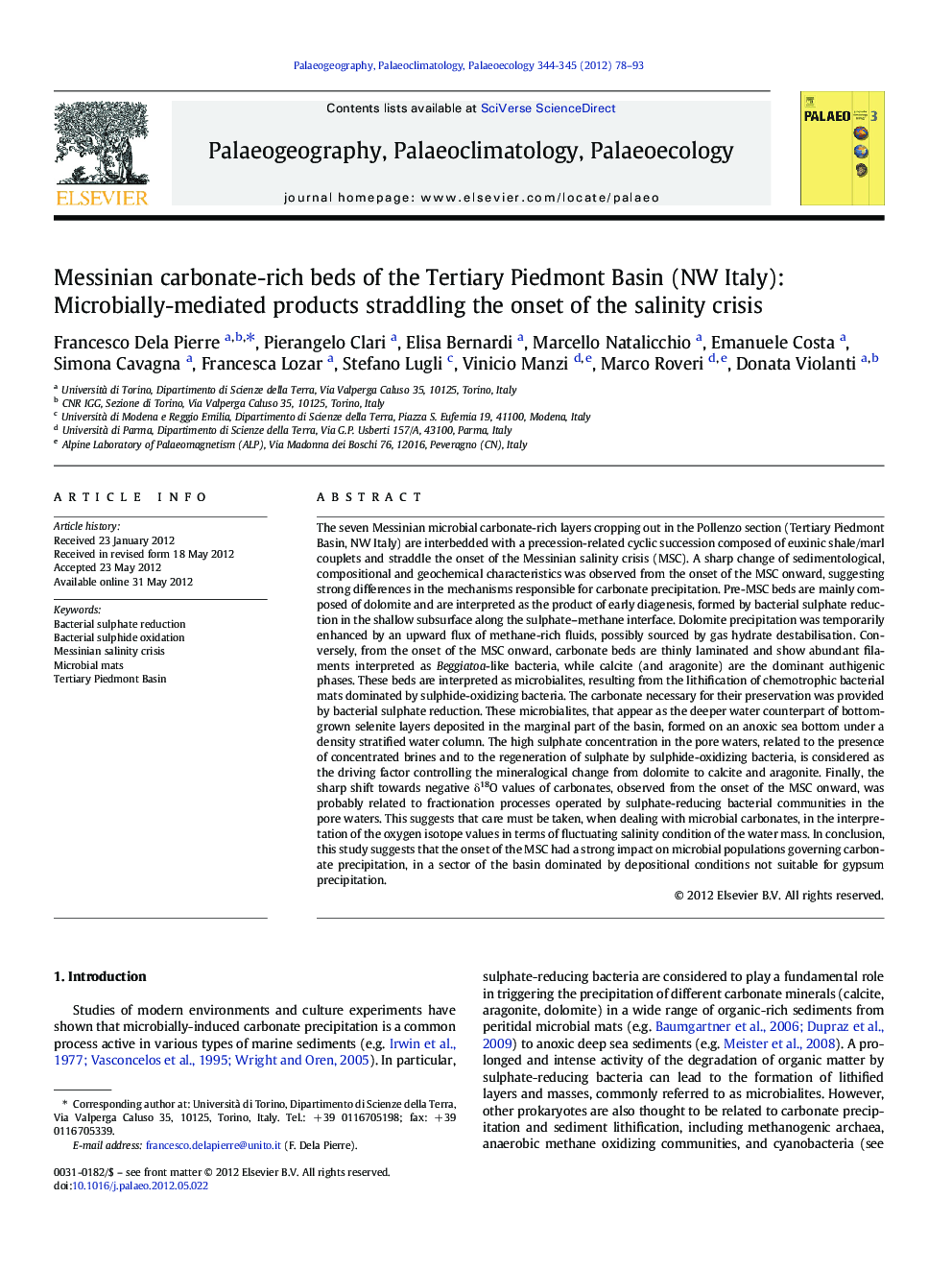| کد مقاله | کد نشریه | سال انتشار | مقاله انگلیسی | نسخه تمام متن |
|---|---|---|---|---|
| 4466873 | 1622228 | 2012 | 16 صفحه PDF | دانلود رایگان |

The seven Messinian microbial carbonate-rich layers cropping out in the Pollenzo section (Tertiary Piedmont Basin, NW Italy) are interbedded with a precession-related cyclic succession composed of euxinic shale/marl couplets and straddle the onset of the Messinian salinity crisis (MSC). A sharp change of sedimentological, compositional and geochemical characteristics was observed from the onset of the MSC onward, suggesting strong differences in the mechanisms responsible for carbonate precipitation. Pre-MSC beds are mainly composed of dolomite and are interpreted as the product of early diagenesis, formed by bacterial sulphate reduction in the shallow subsurface along the sulphate–methane interface. Dolomite precipitation was temporarily enhanced by an upward flux of methane-rich fluids, possibly sourced by gas hydrate destabilisation. Conversely, from the onset of the MSC onward, carbonate beds are thinly laminated and show abundant filaments interpreted as Beggiatoa-like bacteria, while calcite (and aragonite) are the dominant authigenic phases. These beds are interpreted as microbialites, resulting from the lithification of chemotrophic bacterial mats dominated by sulphide-oxidizing bacteria. The carbonate necessary for their preservation was provided by bacterial sulphate reduction. These microbialites, that appear as the deeper water counterpart of bottom-grown selenite layers deposited in the marginal part of the basin, formed on an anoxic sea bottom under a density stratified water column. The high sulphate concentration in the pore waters, related to the presence of concentrated brines and to the regeneration of sulphate by sulphide-oxidizing bacteria, is considered as the driving factor controlling the mineralogical change from dolomite to calcite and aragonite. Finally, the sharp shift towards negative δ18O values of carbonates, observed from the onset of the MSC onward, was probably related to fractionation processes operated by sulphate-reducing bacterial communities in the pore waters. This suggests that care must be taken, when dealing with microbial carbonates, in the interpretation of the oxygen isotope values in terms of fluctuating salinity condition of the water mass. In conclusion, this study suggests that the onset of the MSC had a strong impact on microbial populations governing carbonate precipitation, in a sector of the basin dominated by depositional conditions not suitable for gypsum precipitation.
► We focus on microbially-induced carbonate precipitation.
► We focus on the changes of microbes at the onset of the Messinian salinity crisis.
► Microbialites are the lateral equivalent of gypsum.
Journal: Palaeogeography, Palaeoclimatology, Palaeoecology - Volumes 344–345, 1 August 2012, Pages 78–93